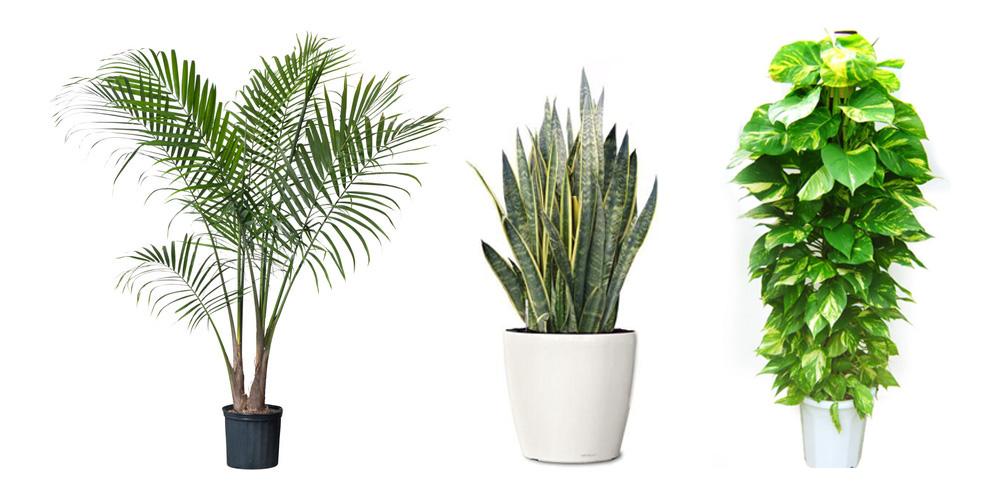We often have the wrong perception that most air pollution leaks into our meeting rooms and offices from outdoors. The truth is, outdoor air is usually cleaner than indoor air, and most air pollution is generated inside - this is true even in urban areas.
Of course, there are situations where outdoor air becomes more polluted. For example, it can get filled with pollen during the flowering season of plants, and it contains large amounts of car exhaust during peak traffic hours. However, these situations are exceptions, not the norm.
This article will provide an overview of 10 air pollution sources that are commonly found indoors.
1. New Furniture and Carpets
Many people like how furniture “smells like new” when recently purchased, but plenty of the chemicals released are actually harmful. Substances called volatile organic compounds (VOCs) become impregnated in furniture or carpets during the manufacturing process, and these VOCs are off-gassed once the piece of furniture reaches the end user.
VOCs are carbon-based chemicals that easily become vapors or gases and spread in the atmosphere. Its sources can be solid or liquid with short and long term adverse health effects.
Consider that VOC release from furniture decreases with time, so this tends to be more of an issue in new constructions or when new furniture is added to an existing building. This issue can be controlled by having a ventilation system that is responsive to pollutant concentrations: airflow is increased in response to high VOC emissions, and then gradually reduced.
Wood furniture and decoration are notorious for releasing large amounts of formaldehyde, a VOC that is highly irritating for the human respiratory system. Formaldehyde helps preserve wood products and controls bacteria, but is unfortunately harmful for humans.
2. Construction Materials
Many construction materials release large amounts of pollutants when new and also when a construction is demolished. Like in the case of furniture, a ventilation system controlled by pollutant measurements can be of great help in solving this issue. Pollutant levels can become especially high when a building interior undergoes a major renovation, since the existing window area and ventilation system may be insufficient to remove all the substances being released; personnel involved in the project should be equipped with respirator masks and any other gear considered necessary.
Special precautions are necessary when old walls and ceilings are being taken apart. Older construction materials often use asbestos, a substance that is very dangerous for humans when inhaled, potentially lethal.
3. Fluorescent Lamps… But Only When They Break
Fluorescent lighting products such as CFL bulbs, circline lamps and T8 tubes contain small amounts of mercury, and it is released indoors whenever a fluorescent lamp breaks. A very simple solution is upgrading to LED lighting, which brings the added benefit of energy savings: you can expect lighting energy consumption to decrease by 30% or more when fluorescent lighting is upgraded to LED.
Lighting energy savings after LED upgrade
LED lighting also demands less attention: the rated service life of LED lamps is 2 to 3 times longer compared with that of fluorescent lamps. This means less money spent on replacing light bulbs.
4. Adhesives, Paints and Solvents
These substances are used during building construction and interior renovations, and they are also significant sources of VOCs. It is very important to keep indoor areas properly ventilated during painting, and also while paint dries because air pollutants continue to be released for some time.
Like in the case of furniture and construction materials, off-gassing from adhesives, paints and solvents is much higher when they have been recently applied. An automated ventilation system can adjust airflow as pollutant levels decrease.
5. Combustion Appliances
As a general rule, anything with a flame produces harmful substances. Therefore, you should avoid combustion in unvented spaces, and this applies even for aromatizer candles and cigarettes.
Keep in mind that cars also exhaust large amounts of air pollutants, so proper ventilation is important in garages and parking areas. In some office buildings we've seen, the air intake was located in the parking lot. If you think this is a terrible idea, you'd be right, as our sensors found this to be a significant source of indoor pollution.
The range of pollutants produced by combustion includes particulate matter, carbon monoxide, nitrogen oxides and sulfur oxides. All are harmful, but carbon monoxide demands special particular attention because it is lethal for humans.
There are two main approaches to prevent pollution from combustion appliances:
Boilers, furnaces, stoves and other appliances that are fixed in place must have a well-design exhaust system.
Appliances with an open flame, such as portable grills, should not be used in closed spaces.
6. Mold and Other Fungi
Mold is an extremely tough organism: it can grow on almost any surface if it has access to humidity, and its spores are found everywhere. As a result, you cannot fight mold directly, since it will simply grow back from spores when removed. Instead, you have to control its source of sustenance - humidity. Spores can be killed by UV radiation but irritate the respiratory system even when dead, so they must be removed from indoor air anyway. Other than spores, mold produces substances called microbial VOCs, which represent a health hazard as well.
Small growths can be handled by building maintenance personnel, but large mold infestations require professional remediation services. A massive amount of spores is released when a large mold growth is cleaned, and you should avoid exposure at all costs. Mold remediation companies send their staff equipped with the adequate gear to avoid exposure, and a containment area may be set up under drastic circumstances.
Foobot’s technology is capable of measuring relative humidity in the air and adjusting the ventilation system accordingly. Although it does not detect mold spores directly, Foobot can help eliminate the humidity that is needed for mold to thrive.
7. Flowering Plants

3 plants that improve indoor air quality: Areca Palm, Mother-in-Law’s Tongue and Money Plant
Keeping plants indoors** is highly recommended, since they can absorb and metabolize many air pollutants. In addition, plants replenish the oxygen content in the air, leading to healthier indoor conditions and improved sleep when used in bedrooms. However, you must be careful to use leafy plants with proven indoor air quality benefits - flowering plants are not recommended because pollen can be highly irritating. In other words, flowering plants defeat their own purpose by absorbing some pollutants and releasing another one.
NASA has published a guide on the best plants to improve indoor air quality, and you can read more about them on this article.
**Updated November 2019.
The decades-old claims about the power of plants to improve indoor air quality might be totally wrong, according to a recent study by the Drexel University. Researchers say that the experiments conducted in previous studies were done in lab-controlled environments.
According to their findings, in the real world, hundreds of plants would be required in a single room to come close to the air-cleaning capacity of just one air purifier.
Although we should be cautious about the findings of this study, it casts reasonable doubts on a generalized belief, and opens up a new and interesting perspective on this topic.
8. Pets and other Domestic Animals
Having pets is nice, but consider that they produce a substance called pet dander - a mixture of dead skin cells and other substances that get caught in fur or feathers. Pet dander can irritate the respiratory system of some people, while being a food source for dust mites, which also cause air quality issues.
Like mold, dust mites need moisture to stay alive, so you can use humidity control to prevent them from reproducing and spreading. However, pet dander is unavoidable so if there are pets with fur or feathers in the building make sure that interior spaces are cleaned frequently.
9. Cleaning Products
This may sound counterintuitive, but many cleaning products are actually detrimental for indoor air quality: they kill germs and produce pleasant odors but also emit VOCs. Like with paints, you should make sure sufficient ventilation is kept when cleaning products are being used.
Some cleaning products are now available in VOC-free versions. If you purchase them whenever possible, a key source of VOCs will be removed from your facilities.
Most every-day chemicals like air fresheners, perfumes, cleaning and laundry products emit harmful substances called VOCs.
10. Air Fresheners and Fragrances
Air fresheners and artificial fragrances come with the same issue as cleaning products: a very high VOC content. A much better option is to use aromatic plants, which are not harmful for your health, while filtering many harmful substances and enriching indoor air with oxygen.
As previously mentioned, aromatic candles are a source of pollution despite their pleasant smell. They release large amounts of particulate matter as they burn, potentially leading to respiratory irritation or long-term health issues.
An Automatic Solution to A Big Issue
Breathing happens automatically during all of our lives, and since we spend around 93% of our time indoors (87% in buildings + 6% in cars), we better keep the quality of the air we breathe at its highest possible. When it comes to indoor air quality (IAQ) improvement, there are two complementary approaches: ventilation and air purification equipment. Both approaches can remove pollutants, but it is also important to limit their release in the first place.
Needless to say that without the proper monitoring system you either won’t know when to open the windows or turn on the fans. In addition, it’s highly inefficient to use manual actuators, i.e. having someone opening/closing windows and doors or turning on and off the air purifier and HVAC systems.
Foobot has developed a state-of-the-art technology to enhance the indoor air quality of your facilities counteracting the above 10 pollution sources, and more, through hands-off 24/7 monitoring and actuation systems.

